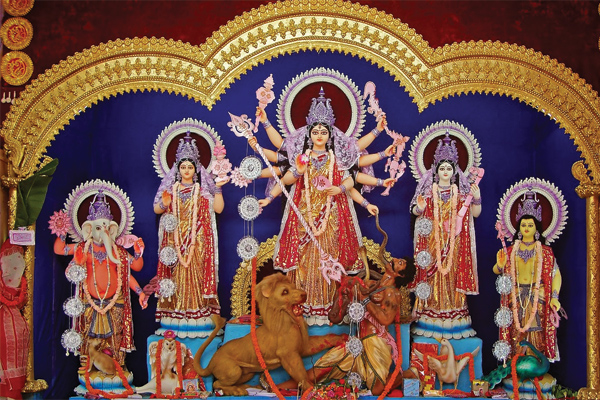Evolution of Pratima and Pandal in Durga Puja
Posted on 05/10/2016 I by: AstroSaathi

The traditional icon of the goddess worshiped during the Durga Puja is in line with the iconography delineated in the scriptures. In Durga, the Gods bestowed their powers to co-create a beautiful goddess with ten arms, each carrying their most lethal weapon.
The tableau of Durga also features her four children - Kartikeya, Ganesha, Saraswati and Lakshmi. Traditional clay image of Durga or pratima made of clay with all five gods and goddesses under one structure is known as ek-chala (ek = one, chala = cover).
There are two kinds of embellishments that are used on clay - sholar saaj and daker saaj. In the former, the pratima is traditionally decorated with the white core of the shola reed which grows within marshlands.
As the devotees grew wealthier, beaten silver (rangta) was used. The silver used to be imported from Germany and was delivered by post (dak). Hence the name daker saaj.
The huge temporary canopies held by a framework of bamboo poles and draped with colorful fabric - that house the icons are called pandals.
Modern pandals are innovative, artistic and decorative at the same time, offering a visual spectacle for the numerous visitors who go pandal-hopping during the four days of Durga Puja.
Source: hinduism.about.com

